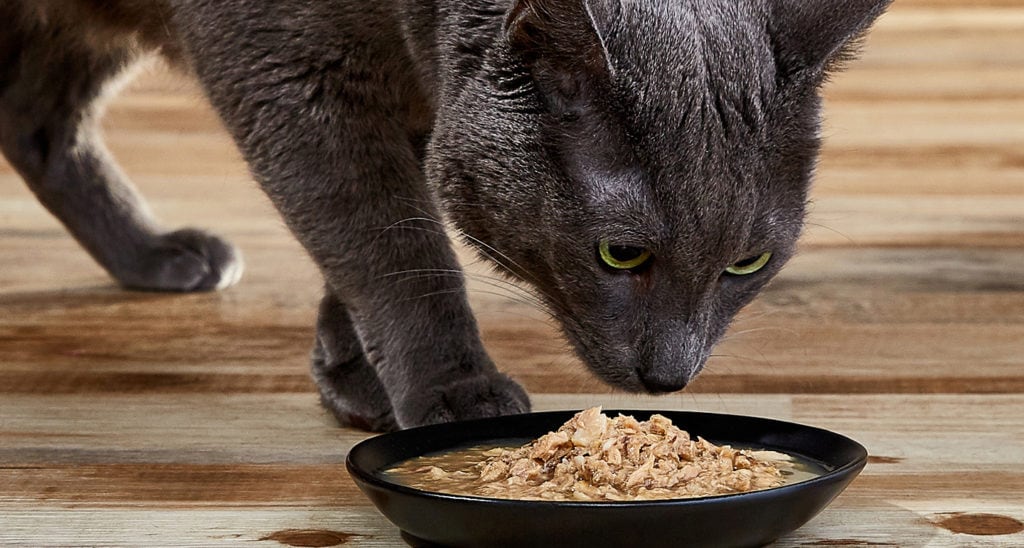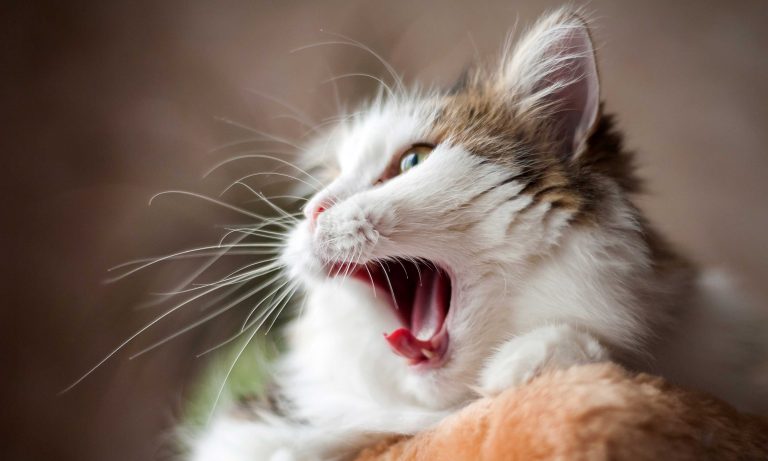Cat parents understand that nutrition plays a vital role in feline health. What you may not realize is the fundamental importance of a high-protein cat food.
Cats are obligate carnivores, which means that animal tissue is a biological requirement for them to enjoy good health. Left to their own devices, cats typically seek out mice, birds or other critters as food.
Examining the things cats track down for themselves in the wild should be a blueprint for a house cat’s diet. Since felines naturally thrive on protein, offering a diet deficient in it can lead to a range of serious health issues.
Benefits of a High-Protein Cat Food
Proteins have amino acids, which play many roles in the body. For your cat, protein can build and repair important body parts, like her fur, skin, claws and muscles. In addition, proteins form enzymes, hormones, neurotransmitters and important parts of the immune system.
Of the 20 common amino acids required for a cat’s normal body function, 11 of them are considered “essential.” The term essential means that cats cannot synthesize these amino acids independently and must get them in their food. Nutritionally complete and balanced high-protein cat foods, like American Journey Landmark wet cat foods, contain all the essential amino acids cats need to flourish.
Unlike humans and many other animals, cats also utilize protein as a primary energy source. Feeding your cats a diet that relies excessively on carbohydrates for energy can lead them to develop obesity and diabetes.
Pay attention to where the protein in your cat food comes from. The best sources of essential amino acids are high-quality animal proteins, not plant-based ones. Furthermore, cats have a short digestive tract that absorbs and makes use of animal protein more efficiently than plant protein.
What Is Considered High-Protein Cat Food?
Adult cat food must contain at least 26 percent protein, and diets approved for growth and reproduction must contain at least 30 percent protein on a “dry matter basis” (a mathematical calculation that compensates for the varying amounts of water that pet foods contain), according to the Association of American Feed Control Officials, which sets forth nutrient standards for dog and cat food.
The required protein amount in adult cat food is the bare minimum, however. Most cats do better with more protein. Consult with your veterinarian to determine what specific level of protein would be best for your cat.
How to Find Protein Content in Wet Cat Food
When reading cat food labels, keep the “dry matter basis” in mind. It can be deceiving to look at the protein percentages listed there before taking into account the amount of water in the food.
To accurately compare the protein level in cat foods, you can mathematically remove the water with the equation below. Let’s try to use this formula to break down the protein content with the Tiki Cat Puka Puka Luau Succulent Chicken Grain-Free Canned Cat Food Formula. Per the label, it contains 16% crude protein and 80% water.
100 - Moisture Content % = Dry Matter %
Calculate the percent dry matter by taking the percent moisture and subtracting that number from 100.
EX. 100 - 80% Moisture Content = 20% Dry MatterCrude Protein % / Dry Matter % = Crude Protein
Divide the nutrient percentage (a protein percentage of 16% for a canned food, for example) by the percent dry matter.
EX. 16% Crude Protein / 20% Dry Matter = .8 Crude ProteinCrude Protein x 100 = Crude Protein %
Multiply crude protein calculation from previous step by 100.
EX. .8 Crude Protein x 100 = 80% Crude Protein
You can use the same formula to remove the moisture content in a dry cat food. However, since there is so much less water in dry food, the protein value doesn’t change as much. Thus, the conversion is not as crucial.
Alternatively, online calculators are available to complete the calculation for you.
High-Protein Wet Cat Food vs. High Protein Dry Cat Food
Because dry foods tend to be higher in carbohydrates, many parents prefer high-protein wet cat food. You also can offer a combination of high-protein wet cat food and kibble.
Another benefit of wet cat food is that kitties are inclined to get their water from their food source. A canned food in a broth, such as Applaws Chicken Selection in Broth Wet Cat Food, aids in hydration. Another great option is Landmark Gourmet Wet Cat Food Salmon Recipe, which contains 95 percent salmon and broth and 5 percent vitamins, minerals and other essential nutrients.
How to Transition Your Cat to a High-Protein Cat Food
When you’re ready to transition your pet to a high-protein cat food, make the switch gradually. As with most changes involving cats, patience is your friend.
On the first day, mix in a small amount of the new cat food with the old. If all goes well, take a week or two to gradually increase the amount of the new food while decreasing the amount of the old food until your cat is completely on her new diet.
Don’t be alarmed if your cat takes a sniff and decides to skip a meal. Remove the dish and resist the urge to give treats and snacks.
Once you offer the next meal, your cat likely will be hungry enough to give it a second chance. During this transition, be sure your cat doesn’t go longer than 24 hours without eating.
A thoughtfully chosen diet lays a fantastic foundation for a healthy cat. Their nutritional requirements are different from those of other species, including humans, which can make appropriate dietary options seem counterintuitive. What is good for people can end up being harmful to cats.
Fortunately, pet parents can learn simply by studying a cat’s natural diet. By providing a high-protein cat food, you can help set your cat up for a long, energetic and healthy life. And as always, check with your veterinarian to see the best food options for your cat.
Share:












